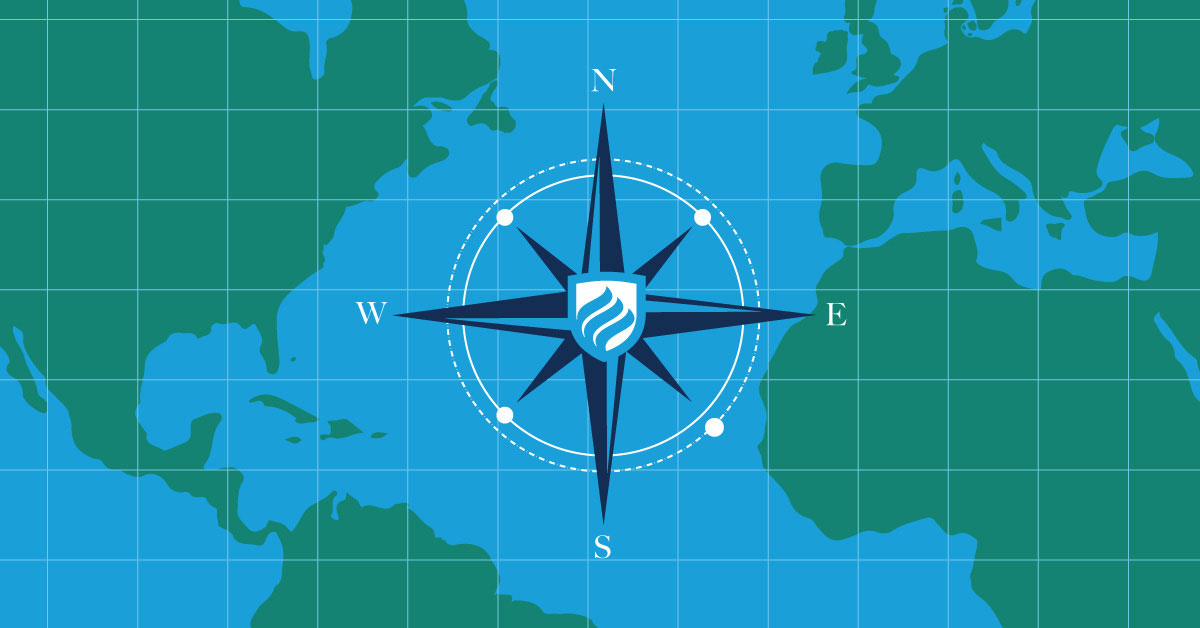5 Tips for Teaching AP Human Geography
GRADUATE STUDIES | 4 MIN READ

Teaching AP human geography is no small task. Geography is everything, and everything is geography. Luckily, that expansiveness means it can be easier to form real-life connections with students’ daily experiences.
AP Human Geography adds a new layer, since students who enroll are typically looking to get a leg up on their college careers by acing the end-of-course exam and banking early course credits. The upside is that those types of students tend to be more ambitious, engaged and hard-working, so you’re already at an advantage as their teacher.
When teaching AP Human Geography, it’s just like we tell our students at Elmhurst University: Tackle a complicated task by breaking it down into manageable parts.
1. Outline the Learning Objectives
Just as with any class, you and your students must know where the end goal is before you start out. Peruse each unit and make a list of concepts to be covered. The learning objectives should be paired with specific course content. They should include the skills that students will be practicing throughout the course to help them think and act like geographers, such as analyzing data and sources and identifying patterns and processes.
2. Implement a Learning Management System
This system is both for your students and for you. The College Board organizes human geography into seven umbrella topics, from “thinking geographically” to “cities and land use.” And there’s a lot of information in between. To keep the learning objectives, readings, notes and assignments within these topics organized and accessible, you’re going to need a system. Here are some options:
- Google Docs is easy to use and perfect for collaboration
- Popular education apps include Schoology, Brightspace and Blackboard
- Your district may have a preferred technology program
- Old-school spreadsheets, notebooks and bulletin boards—there’s a reason they’ve survived this long!
3. Tap All Available Resources
Take advantage of the tangible and timely components of human geography and use them to bring the subject to life for your students. Do you have access to a drone for aerial mapping? Can you take field trips to examine urban landscapes or nature preserves? What current political and cultural issues are students already invested in?
Don’t forget to invite parents, business leaders and community members into your classroom who can speak to the dozens of careers tied to human geography.
Meanwhile, consider adding geographic information systems (GIS) into your curriculum. GIS software is available, free of charge and in the cloud, for K–12 schools in the United States. There are many ready-made lessons for teaching human geography that utilize both GIS concepts and skills.
4. Differentiate Instruction
Here’s another strategy that’s not new to teachers, but can be overlooked in the pressure cooker of prepping for the AP Human Geography test. Project-based learning lets students address several key concepts at once and emphasizes the holistic nature of the discipline. Instead of just studying the methods and tools of geographers, students put them to use.
Short on time? Many teachers have had success with a “flipped classroom,” where instructional content is delivered outside of class time, making the teacher available to facilitate innovative activities within the classroom.
5. Prepare with an AP Human Geography Practice Test
Waiting until the end-of-course exam to check student progress is a recipe for disappointment. Give periodic formative assessments to monitor understanding and offer plenty of review sessions prior to the exam.
The updated AP Human Geography test has 60 multiple-choice questions and three free-response questions, with an increased emphasis on analyzing quantitative and qualitative sources. Practice questions are available from The College Board.
Explore Additional Resources
When you’re ready to take your teaching of this topic to the next level, Elmhurst University is there. Elmhurst offers a fully online graduate certificate in human geography for AP. The program takes less than a year to complete and provides you with lesson plans, exercises and a national online community to share and collaborate on AP Human Geography teaching issues.
The certificate program includes learning the basics of GIS correlated to the AP Human Geography curriculum and introduces geospatial concepts and technology to enhance student learning.
Request information to learn more today!


